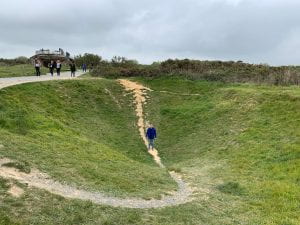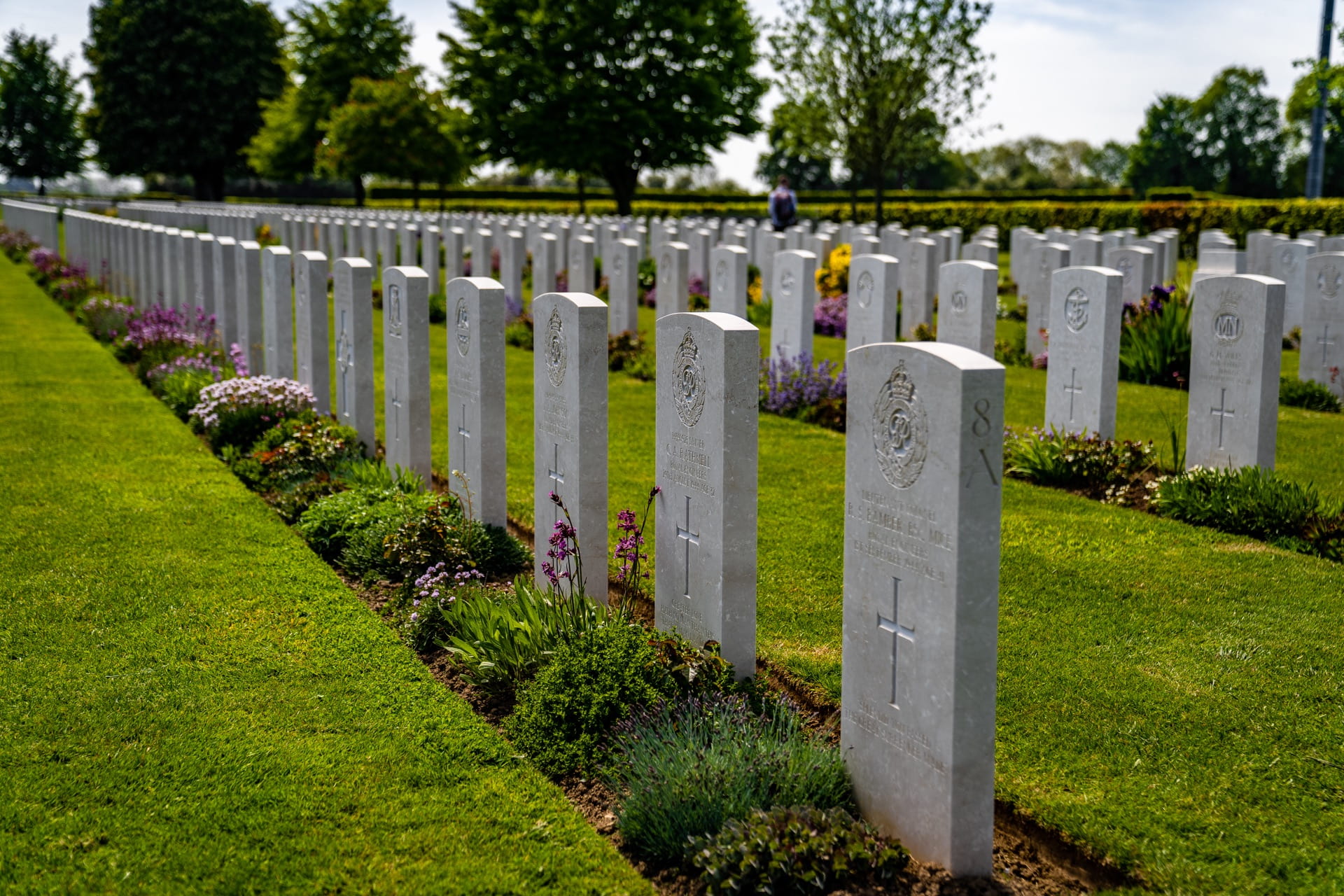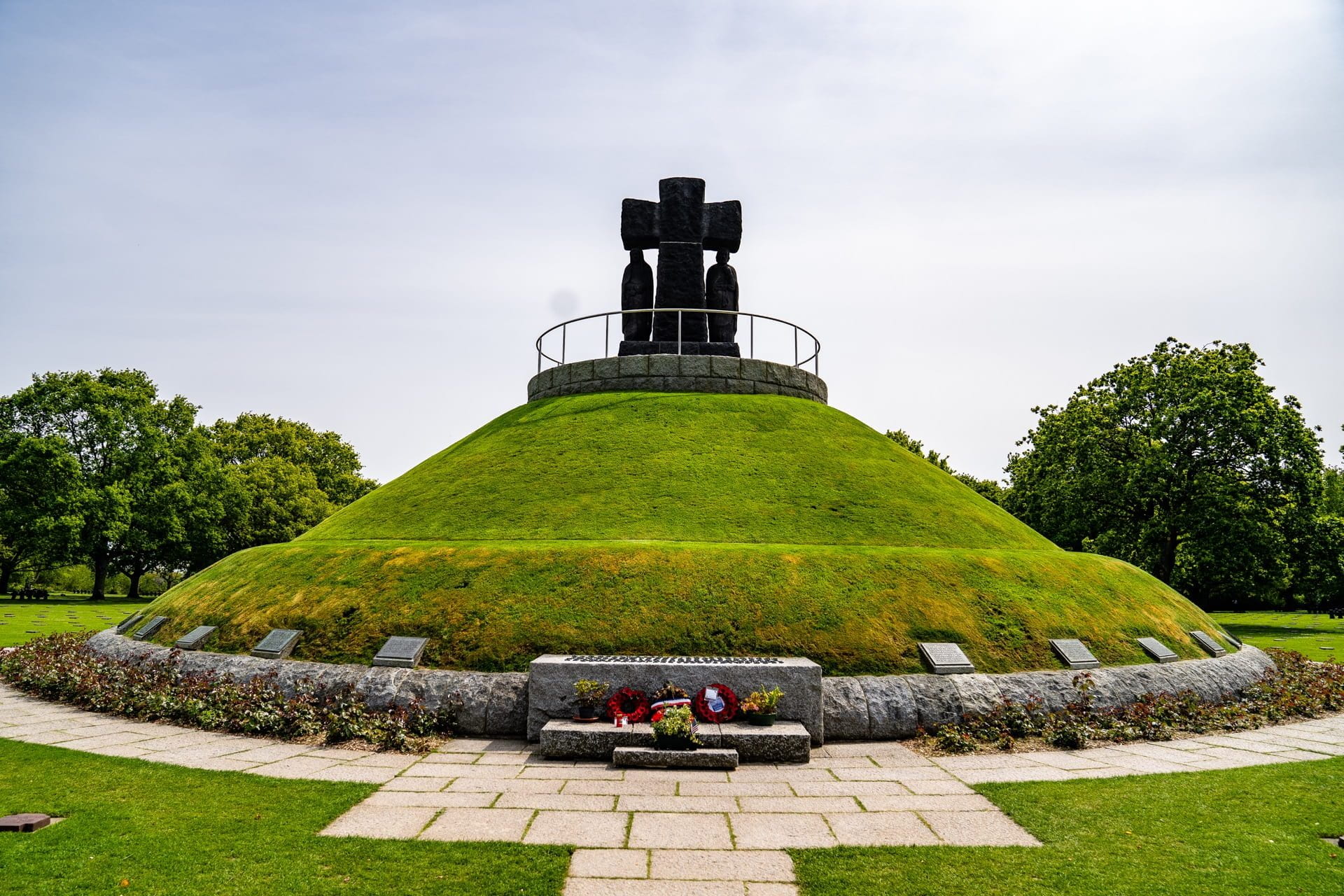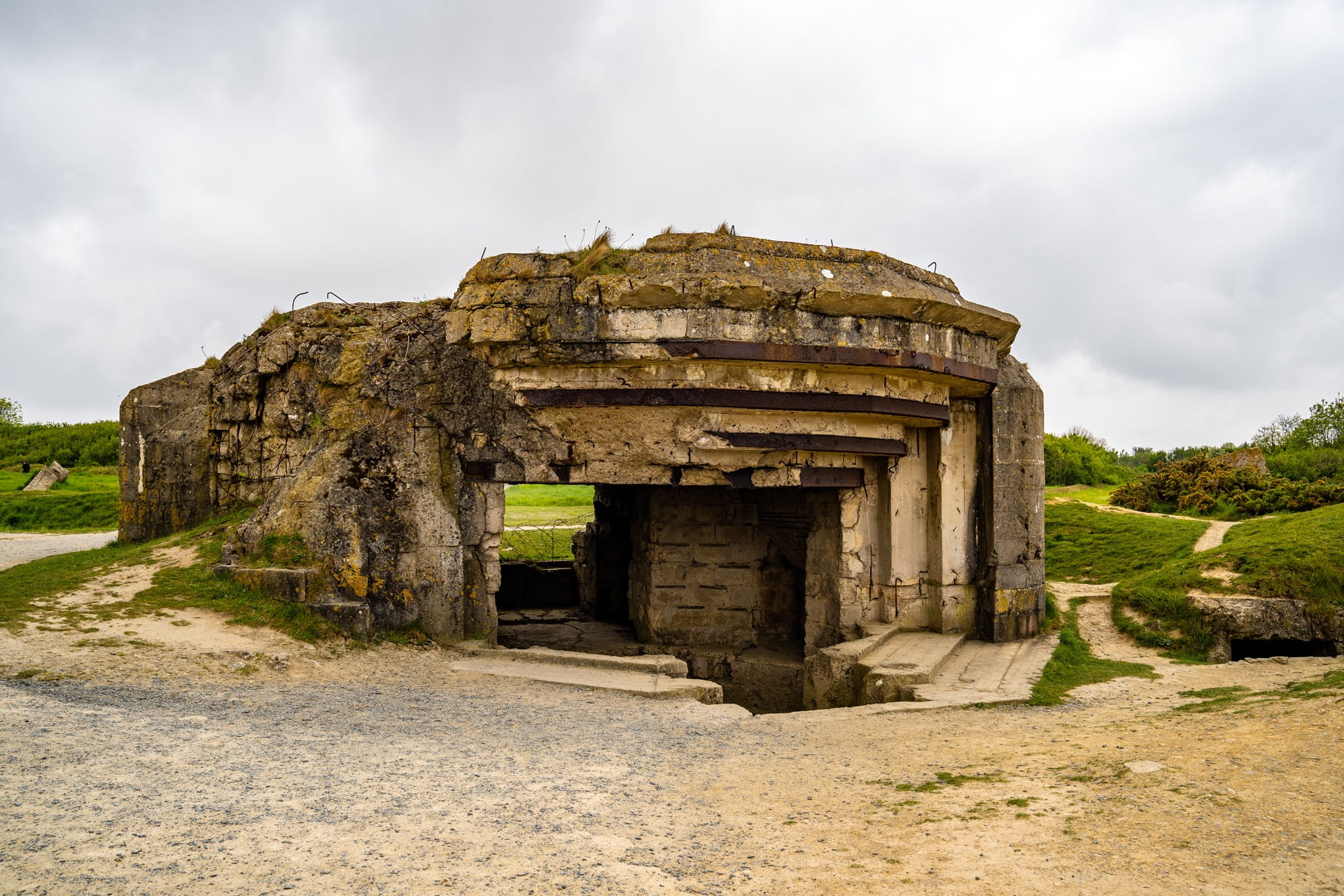On the morning of May 16th, I visited a tiny church at Angoville-au-Plain in Normandy, where medics Robert Wright and Kenneth Moore cared for 80 combatants and a child during Operation Overlord. Wright was a paratrooper in the U.S. 101st Airborne Division and an Ohio State Buckeye. By transforming the 900-year-old church into an aid station, Wright and Moore remembered their common humanity. They insisted on tending to both American and German soldiers who checked their weapons at the door. They draped the eglise (i.e. “church” in French) with a Red Cross banner from its steeple, making it neutral territory under the Geneva Convention on Warfare. Although Angoville changed hands several times during the heavy fighting, the medics risked their lives and remained in the church to treat wounded and dying soldiers. At one point, an artillery shell crashed through an aperture in the roof and thudded onto the stone floor. Luckily, it was a dud.

Like the church at Angoville, the crucifix above Gold Beach has palpable religious symbolism. I interpreted it as the redemptive value of suffering for something larger than one’s self.
Near Angoville, the town of Sainte-Mère-Église was an important crossroads in the plan to liberate Northern France. Operation Overlord demanded the capture of key transportation routes between Nazi-occupied Paris and the Cherbourg Peninsula. By capturing the town, American paratroopers prevented German reinforcements and controlled a vital causeway above Utah Beach, one of five Allied landing zones. If they did not secure the causeways leading through the high bluffs, then U.S. troops would have been trapped on the beaches.
Wright and Moore decided to operate out of Angoville because it was located between the heavy fighting at Utah Beach and Sainte-Mère-Église, where medics were sorely needed. They hauled injured combatants in wheel barrows and carried them out of the combat zone and into the sanctuary of the aid station, where the blood of American and German soldiers stained its wooden pews. These bloodstains cannot be washed out and must not be forgotten. They are the price of liberty from tyranny, of free religious expression, of democracy and equal justice under God. Although millions died without knowing the type of world that would be built from the horrors of war, men like Robert Wright eased their journey and lightened their heavy burden by practicing extraordinary works of mercy and compassion in the heat of battle.

Fittingly, Wright was laid to rest in the cemetery outside the church. Dr. Nick Breyfogle planted an OSU flag to commemorate Wright’s legacy as a Buckeye. It was a stirring moment for everyone present.
75 years after D-Day, Angoville remains a beautiful French hamlet of less than 100 residents, and it still memorializes the struggle for liberation. The town’s mayor and his spouse graciously received our large tour group, no doubt larger and louder than the usual foot traffic. At first, he thanked us for coming and highlighted the generosity of Americans in preserving the church as a historical landmark. He went on to express deep concern about future generations forgetting about the history of World War II and repeating the mistakes of past generations. His reception was a touching and inspiring example of French historical memory and its relationship to the United States. Although Angoville was one stop on our long journey, I will never forget my experience there. The church deserves to be visited, because it captures something beautiful, somber, and serene about the Second World War and its legacy today.
































